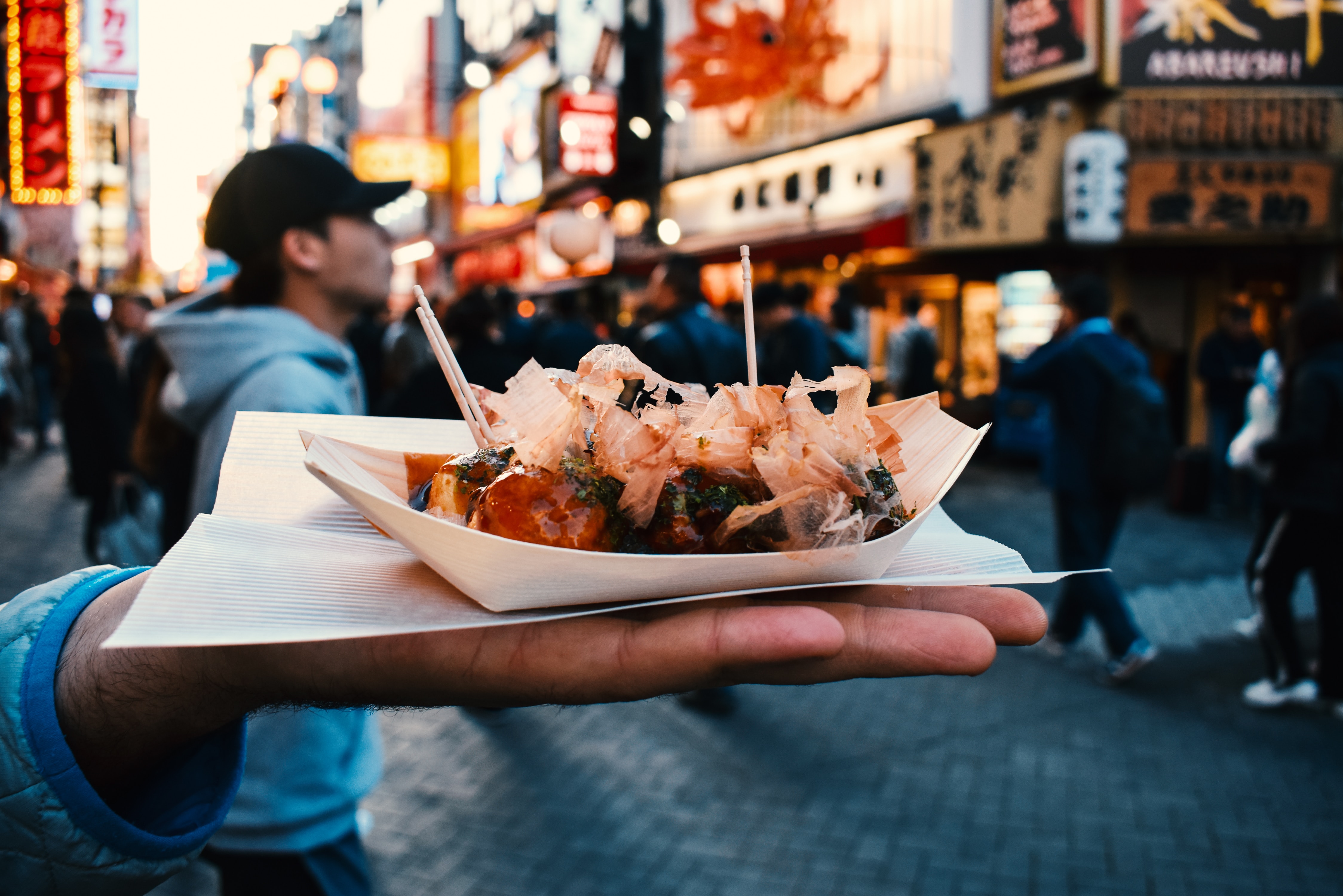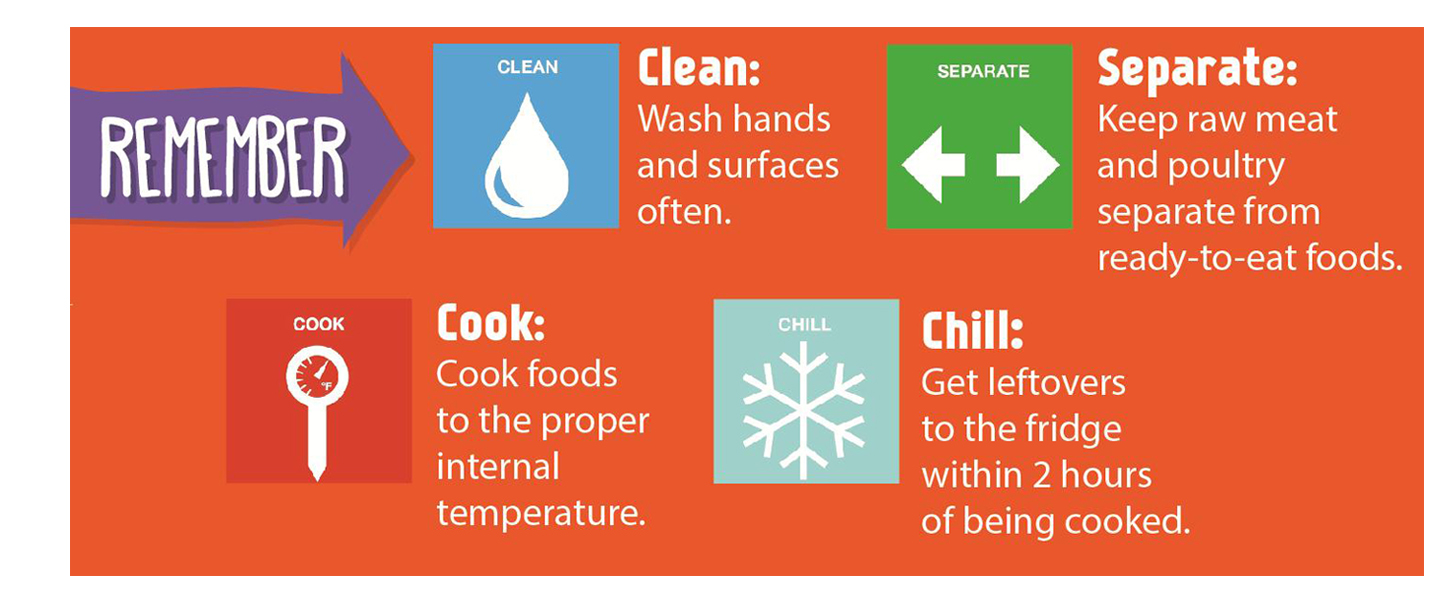Food poisoning sickens about 48 million Americans and sends 128 thousand to the hospital every year. Some food poisoning, like salmonella, can have symptoms that last for years. Most are dangerous for sensitive populations like infants, pregnant women, and our elderly. Preventing food poisoning can be simple, but it takes the combined effort of companies selling food and the people who buy it.
Buying and Selling Street Food | Food Permits | Restaurant Red Flags | What We Do | Report a Restaurant or Food Vendor | Cooking at Home
Buying and Selling Street Food

No matter how tempting the aroma, remember to ask a simple
question before buying food from someone out of their home or vehicle: do you have a food permit?
Foods with meat, dairy, and other perishable ingredients can quickly grow dangerous bacteria if they aren't prepared and stored correctly. The USDA warns, food should be refrigerated within two hours to prevent these bacteria from growing and within one hour if the food is out in temperatures above 90 degrees.
Displaying a valid food permit doesn't ensure the food is safe, but it does ensure the people selling it have completed basic food training, and undergo a surprise inspection at least once a year.
If you want to sell food on social media, or other sites, please contact your local office and make sure your product doesn't require a food license. If you see someone selling food on social sites or parking lots without a license please call your local office so an environmental
health specialist can investigate and make sure that food provider is selling safe products.
Who needs a Food Permit?
The Idaho Food Code requires any person planning to store, prepare, package, serve, and sell high-risk food to a customer. High-risk foods include anything that should be refrigerated or cooked to specific temperatures to avoid causing food-borne illnesses. Preparing food for someone and giving it to them for free does not require a food permit. Please see the cooking at home section for tips to ensure that food is safe to hand out.
The following foods all require a food permit to sell:
- Food that contains dairy. This includes pies or other baked goods with cream fillings.
- Food that contains cooked meat including: eggs, chicken, beef, pork, fish, fowl, etc. This includes pizza, tamales, burritos, hamburgers, ribs, sandwiches, soups, etc.
- Food that contains some vegetables and fruit prone to spoilage including: cut fruits, raw seed sprouts, etc.
*This is a summary list and does not include all foods that require a food permit to sell. If you are considering selling ANY food please call your local health district office for guidance. *
Foods that don't require a license to sell include all cottage foods. This is term that defines low-risk foods made in a person's home and sold directly to a customer. This can include baked goods that don't require refrigeration, dried fruits, dry herbs, cereals/granolas, nuts, uncut fruits and vegetables, popcorn or popcorn balls, and tinctures that do not make any medical claims. Learn more about cottage foods here.

Restaurant Red Flags
The Idaho Food Code has quite a few rules to follow, but there are a couple of simple tips you can follow to help protect your health while eating out. If you are concerned about health code violations in a restaurant, within south central Idaho, let us know with an email or contact your local SCPHD office.
- Your server is noticeably sick: If your server is battling a runny nose, or looks like they should be at home in bed, be wary. Beyond a simple common cold, there are several illnesses wait staff can spread to customers- including a bacteria called Staphylococcus Aureus.
- The bathroom is dirty: Restaurants are required to keep clean paper towels, soap, and water on hand for staff and customers. Routine cleaning is part of running a safe restaurant. If the stalls, sinks, and floors look they haven't been cleaned in a couple of days it could be a big red flag.
- You notice signs of rodents or cockroaches: A couple of pest bugs, like flies, are inevitable in any building. However, if you notice signs of cockroaches or rodents in the building there is likely an infestation that should be investigated immediately.
- A staff member handles food and payment (money) without washing their hands: This is likely only an issue you'll see in a smaller establishment where a staff member has several responsibilities. If the person making your food also takes your payment they should wash their hands after handling the money. Or put on a new pair of gloves every time they go back to handling food again. Money can carry a multitude of germs that may make you sick.
- You get sick three or more hours after eating at a food establishment: Food illnesses may start showing symptoms anytime between three and 36 hours after eating food. If you begin feeling sick immediately after eating at a restaurant it probably wasn't your last meal's fault. If you suspect food at a restaurant made you sick try to think about all the foods you ate in the last 36 hours, including that restaurant meal, so you can help a SCPHD epidemiologist track down the cause of your illness.
Click here to see results from local food establishment inspections.
What We Do
When you call or email SCPHD to report a business, what do we do with that information? First, those reports are kept confidential. During an investigation an environmental health specialist may bring up the nature of the complaint, but they will never reveal your name. Second, specialists don't go into these investigations intending to shut anyone down. Typically, SCPHD will work with a business to improve their conditions and meet health code standards. If a health code is repeatedly violated, or severe enough, SCPHD may have to revoke a business food license until they can correct the problem.
Environmental Health Specialists at SCPHD do their best to monitor all food establishments even before these complaints are made-helping owners and staff understand food-safe practices, enforcing the Idaho Food Code, helping people work through the permitting process so they can start their business, and investigating complaints against any food establishments that may be spreading food-borne illnesses.
To do this effectively they need YOUR HELP. If you want to sell food on social media, or other sites, please contact your local office and make sure your product doesn't require a food license. If you see someone selling food on social sites or parking lots without a license please call your local office so an environmental health specialist can investigate and make sure that food provider is selling safe products. Selling high-risk foods without a food permit or license can result in a fine.
4 Simple Steps to Food Safety in Home Cooking

- Wash everything! Wash your hands, all cooking surfaces,
utensils, and pots and pans with hot, soapy water before and
after using them to prepare food. When dealing with especially high-risk foods, like raw meat, it's important to wash your hands and utensils immediately after touching any of the raw meat. Wash all fruit and vegetables before use, but don't wash meat. Water droplets may bounce off raw meat and contaminate other surfaces. - Separate! Don't cross contaminate: Use one cutting board for all fruits and vegetables, and a different cutting board for raw meat. Keep all raw meat separate from any food you plan to eat without cooking, even in the grocery cart. Raw meat, eggs, fruit, and even vegetables all carry different bacteria and pathogens that can become dangerous if they are mixed.
- Cook to the right temperature. Food carries bacteria. Some of that bacteria can make you sick if it's isn't cooked out. Check the *chart below to make sure you are cooking your meat to the right temperatures. After cooking make sure you keep your food above 140˚F to avoid growing any new bacteria. If microwaving food, make sure the internal temperature reaches at least 165˚F. Stir heat in the middle of cooking to help the heat get all the way through your dish.
- Chill out! The USDA calls temperatures between 40˚F and 140˚F the "danger zone" because that's when bacteria often grow. Avoid this danger zone by keeping your food above 140˚F after cooking, and get it down to 40˚F as soon as possible after you are finished eating. Food should be stored in a refrigerator or freezer within two hours of cooking, unless it is kept hot with a warmer plate, burner, or crockpot. If food is left out in temperatures above 90˚F it is important to refrigerate it within one hour. Check out the **Safe Storage Times chart below to see how long you can safely store food.
*Safe Temperatures Cooking Chart.
**Safe Storage Times chart
